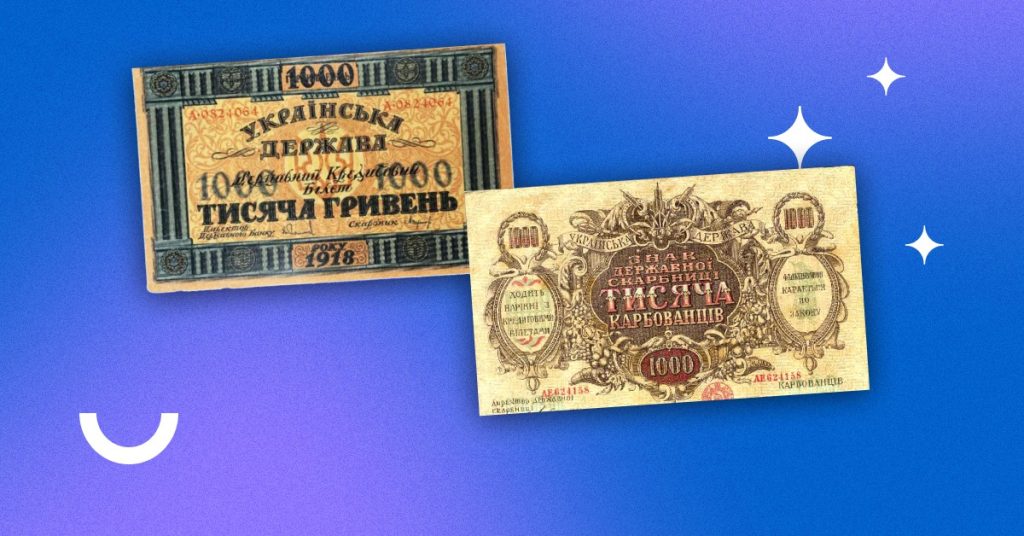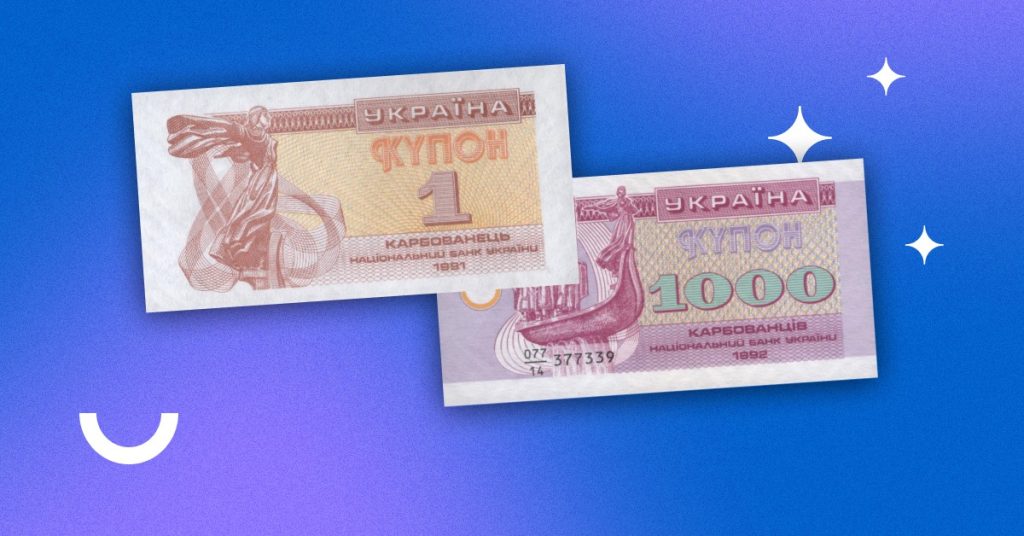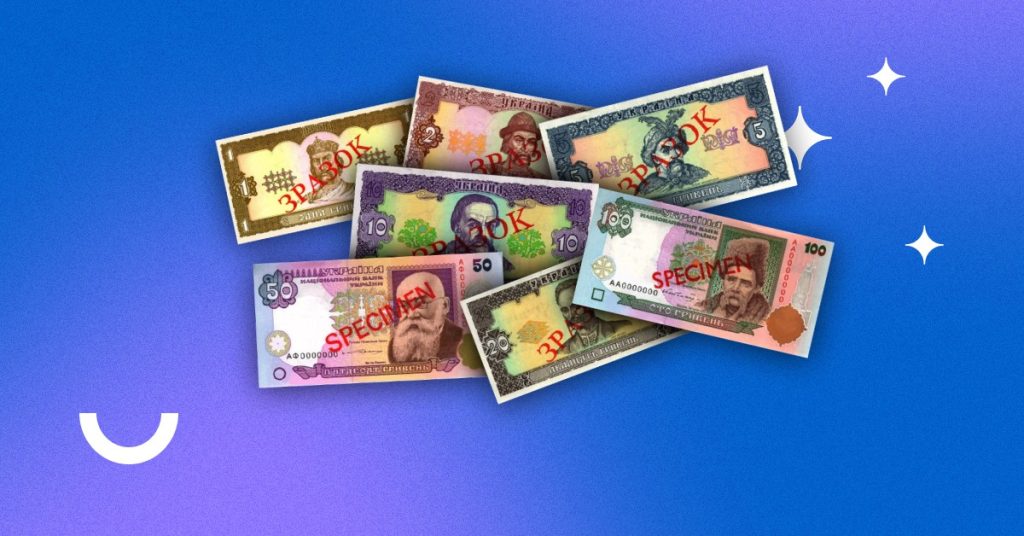
Five-year dev plan and the best protection: the history of the Ukrainian hryvnia
September 2 is traditionally considered as Hryvnia Day in Ukraine.On this day the President of Ukraine Leonid Kuchma released a decree “On monetary reform in Ukraine”, which indroduced a new full-fledged currency – the hryvnia and its hundredth part – the kopeck. The bill_line team congratulates our fatherland on the 28th anniversary of the hryvnia and decides to tell what the path of our country was to its own money.
Many people wonder why Ukraine gained independence in 1991, but its own currency appeared only in 1996? There is no simple answer, because the financial system has gone through a long (and thorny) path of evolution and formation. It contained everything – from the first currencies on plain paper to secret delivery operations.
“Consumer cards” as the first currency substitute
Ukraine undertook the obligation to introduce its own money in the Declaration on State Sovereignty dated July 16, 1990. In particular, the following was stated in Chapter VI “Economic independence”:
The Ukrainian SSR independently creates banking (including the Foreign Economic Bank), price, financial, customs, and tax systems, forms the state budget, and, if necessary, introduces its own currency.
Until December 1990, the first coupons (officially called “Consumer Cards”) were in circulation in parallel with Soviet rubles – a one-time currency substitute allowed as a means of payment. The first coupons were detachable and printed on plain paper, so they could not last long.

How the hryvnia was approved (a lot of state resolutions)
In early spring of 1991, that is, before the declaration of independence, there’s already work on the creation of its own currency. The issue was controlled by two bodies of the Verkhovna Rada:
- Commission on Economic Reforms and Management of the National Economy;
- Commission on Culture and Spiritual Revival.
On November 14, 1991, the Verkhovna Rada adopted a resolution on the introduction of the national currency. It did not yet have the word “hryvnia”, it will still have to be chosen in the discussion.
In favor of the hryvnia spoke not only the historical durability of the Kyiv Rus era, but also modern history: in 1917-1918, in parallel with the karbovantsi, a currency with this name was issued by both the Ukrainian People’s Republic and the Ukrainian State of Pavlo Skoropadskyi. The designs of the first currency of modern Ukraine were created by the legendary illustrator Heorhiy Narbut.

Not all parliamentarians gravitated to the hryvnia. Some considered the already mentioned karbovanets, numerous representatives of the communists and russian sympathizers proposed to keep the ruble, some deputies introduced the name “kuna” (the currency of Croatia), and representatives of the diaspora proposed the “Ukrainian dollar”. Instead of a kopeck, we could get a hundredth, rezana or shag.
On August 24, 1991, Ukraine declared independence (that act still had to be approved by the December referendum), but already in September the government began to take further steps towards monetary sovereignty.
Yes, you guessed it right, a number of other resolutions were adopted. On September 18, the document “On the creation of facilities for the production of national currency and securities” was published. The National Bank began the process of building the relevant facilities, and on December 10 – 2 weeks before the resignation of the President of the USSR Gorbachev – issued a resolution “On approval of the name and characteristics of the monetary unit of Ukraine.”
Coupon-karbovanets and hyperinflation
In December 1991, the Soviet Union disappeared from the map, and the economic collapse from the destruction of the financial system threatened to devalue the new currency. Perhaps it was for these reasons the head of the National Bank Volodymyr Matvienko, didn’t sign the hryvnia for printing. Instead, on January 10, 1992, the regulator introduced a temporary currency – coupon-karbovanets.

As you know, there’s nothing more permanent than temporary things: the coupon-karbovanets existed until August 25, 1996 and managed to depreciate 100,000 times. At this rate it could be exchanged for 1 hryvnia in 1996. The temporary currency took the brunt of the hyperinflation of the 90s until the government stabilized the economy and introduced permanent money.
How the hryvnia appeared
The design of the future hryvnia was developed by artists Vasyl Lopata (portraits of prominent figures and landscapes) and Boris Maksymov (design of bills, ornaments, fonts).
An interesting fact: in April 1991 – before the declaration of independence – the necessary work of the currency design was carried out not for independent Ukraine, but for the Ukrainian SSR, the”Union Republic” of the USSR. In 1992 it was extended for the new state.
Work on a permanent currency was taken very seriously. Lacking its own technical capabilities, the first hryvnias were printed by the Canadian Bank Note Company – one of the world’s most trusted bank note companies, which works for many central banks. In 1992, “1 hryvnia” was printed on their machines, and in 1994 – 2, 5 and 10 hryvnia denominations. 50 and 100 hryvnia banknotes were produced in Great Britain. Ukraine’s own Banknote Factory appeared in 1994, and the Mint was established only in 1998.
In 1996, printed hryvnias were delivered to Ukraine by sea from Canada and Malta in a strict secrecy mode. This operation had the symbolic name “Shield of Ukraine”. And on August 25, by the aforementioned decree of Leonid Kuchma, the hryvnia officially became the currency of Ukraine. It was possible to pay with coupon-karbovanets coupons until September 16, and after that – only exchange it. The first exchange rate of the hryvnia to the dollar was 1.8 hryvnia, and at that time hryvnia was one of the world’s most counterfeited currencies. And if it is impossible to maintain such a course now, our currency still has a high level of safety.

Interesting facts about the Ukrainian hryvnia
- On the 1 hryvnia banknote, the artist Vasyl Lopata made a self-portrait, because images of Prince Volodymyr have not survived to this day;
- The first version of the 10-hryvnia banknote doesnʼt depict Ivan Mazepa, but Pylyp Orlyk: artists Oleksandr and Serhiy Haruky submitted several options and approved this one;
- The design of 500 hryvnias was made on the personal initiative of Vasyl Lopata: at the time of the launch the maximum denomination was 100 hryvnias, and the 200 hryvnia note was in reserve.


